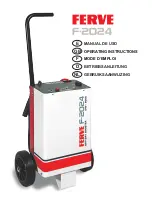
towing rings ..........................................(up to the end of the DU)
Isofix .....................................................(up to the end of the DU)
1.32
ENG_UD11394_2
Sécurité enfants : généralités (X95 - B95 - D95 - J95 - R95 - Renault)
ENG_NU_840-2_JR95_Renault_1
chILd sAfETy: choosing a child seat
Rear-facing child seats
A baby’s head is, proportionally, heavier
than that of an adult and its neck is very
fragile. Transport the child in this posi-
tion as long as possible (until the age of
2 at the very least). It supports both the
head and the neck.
Choose a bucket type seat for best side
protection and change it as soon as the
child’s head is higher than the shell.
forward-facing child seats
The child’s head and abdomen need
to be protected as a priority. A forward-
facing child seat which is firmly at-
tached to the vehicle will reduce the risk
of impact to the head. Ensure your child
travels in a forward-facing seat with a
harness or buckle for as long as their
size permits.
Choose a bucket type seat for optimum
side protection.w
Booster cushions
From 15 kg or 4 years, the child can
travel using a booster seat, which will
enable the seat belt to adapted to suit
his size and shape. The booster seat
cushion must be fitted with guides to po-
sition the seat belt on the child’s thighs
rather than the stomach. It is recom-
mended that you use a seatback which
can be adjusted in terms of height to
position the seat belt in the centre of the
shoulder. It must never rest on the neck
or on the arm.
Choose a bucket type seat for optimum
side protection.
















































